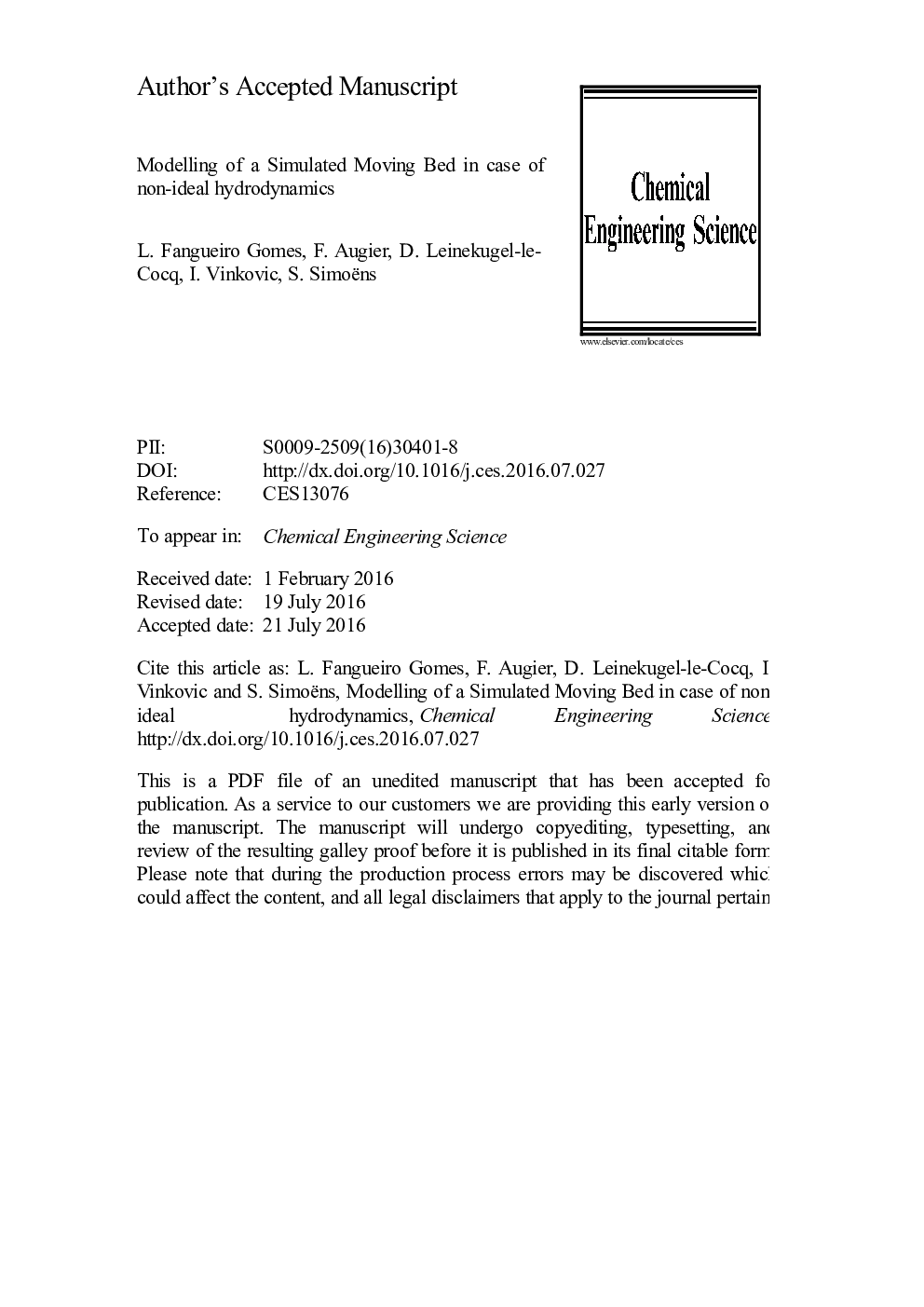| Article ID | Journal | Published Year | Pages | File Type |
|---|---|---|---|---|
| 154346 | Chemical Engineering Science | 2016 | 23 Pages |
Abstract
The one-dimensional hydrodynamic model proposed by Gomes et al. (2015) is coupled with adsorption and validated by comparing the concentration profiles of the one-dimensional model with those given by the CFD model of one adsorption column including obstacles as distribution network and beams. This one-dimensional model is capable of predicting the CFD results for different mass transfer rates, while the traditional dispersed plug flow (DPF) model is relevant for slow mass transfer rates only. The model proposed by Gomes et al. (2015) is capable of reproducing the adsorber Residence Time Distribution (RTD) while dissociating the selective zones from the non-selective ones. It is based on the CFD techniques developed by Liu and Tilton (2010) and Liu (2012) that transport the moments of the fluid age distribution and consequently calculate the degree of mixing (Danckwerts, 1958; Zwietering, 1959). Then, this new model is integrated in a cyclic solver in order to perform Simulated Moving Bed (SMB) studies. The new model provides a detailed hydrodynamic description, which appears to be mandatory especially when mass transfer exchanges are fast, without undergoing the prohibitive simulation times of CFD models.
Keywords
Related Topics
Physical Sciences and Engineering
Chemical Engineering
Chemical Engineering (General)
Authors
L. Fangueiro Gomes, F. Augier, D. Leinekugel-le-Cocq, I. Vinkovic, S. Simoëns,
